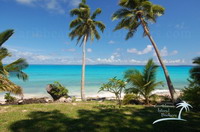Login form
Caribbean Islands
 What would you see if you took a cruise to the Caribbean Islands? Palm trees and coconuts? White beaches and clear, blue ocean? Colorful corals and even more colorful fishes and birds?
What would you see if you took a cruise to the Caribbean Islands? Palm trees and coconuts? White beaches and clear, blue ocean? Colorful corals and even more colorful fishes and birds?
You bet. There are thousands of islands in the Caribbean Sea. They are famous for their warm, tropical climate and great natural beauty.
A CHAIN OF ISLANDS
The Caribbean Islands form a chain that separates the Caribbean Sea from the rest of the Atlantic Ocean. They’re like a long necklace that stretches between North and South America.
Many of the islands were formed by the eruption of ancient volcanoes. Others are low-lying coral islands that gradually rose from the ocean.
SEVERAL NAMES
The Caribbean Islands are known by several names. The earliest name used by Europeans is the Indies, later changed to the West Indies. The explorer Christopher Columbus called the islands the Indies in 1492 because he thought he was near the coast of India. Later, Spain and France called the islands the Antilles.
LARGE ISLANDS, SMALL ISLANDS
There are four large islands in the Caribbean Sea. They are Cuba, Puerto Rico, Jamaica, and Hispaniola. (Hispaniola is divided into Haiti and the Dominican Republic.) These four islands are often called the Greater Antilles. Together, they account for about 90 percent of the land area of the Caribbean Islands.
The rest of the Caribbean Islands are much smaller. They are often called the Lesser Antilles. Some of these islands are no more than tiny slivers of exposed coral. You can see why pirates such as the famous Blackbeard sailed these waters. There are countless small islands to bury treasure or hide on.
ALMOST PARADISE
The weather of the Caribbean Sea is almost always warm and sunny. Sandy beaches line the coasts of many islands. This is why millions of tourists visit the islands each year. Many tourists arrive on cruise ships.
But life in the Caribbean Islands is not always paradise. Violent hurricanes or volcanic eruptions can make the islands a very dangerous place to be.
HURRICANES AND VOLCANOES
In the summer months, hurricanes can sweep in from the Atlantic Ocean, bringing destructive winds to the islands. If a hurricane hits an island, look out! A hurricane can cause terrible damage.
There are many active volcanoes in the Caribbean Islands. In 1997, a volcano erupted on the island of Montserrat and destroyed its capital city.
MANY COUNTRIES AND CULTURES
There are 13 independent countries in the Caribbean Islands. Many of the smaller islands belong to the United States, France, The Netherlands, Venezuela, and the United Kingdom.
The people you’ll meet in the Caribbean Islands are a mix of many different cultures. The first people to live there were the native Taino and Carib Indians. Most native Indians died long ago after people from Europe arrived and formed colonies. The Europeans brought millions of slaves from Africa to work their huge sugarcane plantations. Still later, people from India and China came to the islands to find work.
Today, most people in the Caribbean speak Spanish, but French, Dutch, and English are widely used, too. Nearly half the people work the land as farmers. Many still work on large sugarcane or coffee plantations. Other important crops include bananas, citrus fruits, cotton, and tobacco.
Source: Microsoft ® Encarta

